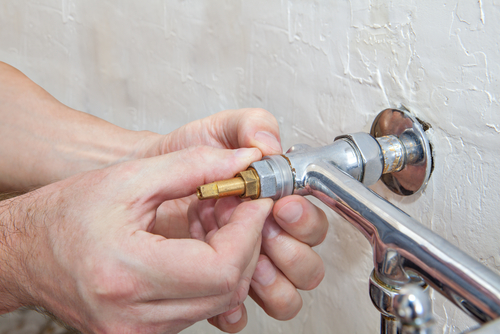Are you interested in resources about How to Fix a Dripping or Leaky Faucet ?

Trickling taps may appear like a minor hassle, but their impact goes beyond simply the nuisance of the noise. From drainage to sustaining unneeded economic expenses and wellness risks, disregarding a leaking faucet can lead to numerous effects. In this write-up, we'll look into why it's critical to resolve this usual family problem quickly and effectively.
Wastefulness of Water
Ecological Effect
Trickling faucets contribute significantly to water wastefulness. According to the Epa (EPA), a single tap dripping at one drip per secondly can throw away greater than 3,000 gallons of water annually. This not only pressures water sources but additionally influences ecological communities and wildlife based on them.
Step-by-Step Guide to Taking Care Of a Dripping Tap
Devices Called for
Prior to trying to fix a dripping tap, collect the essential devices, consisting of an adjustable wrench, screwdrivers, replacement parts (such as washers or cartridges), and plumber's tape.
Usual Tap Issues and Their Solutions
Determine the type of tap and the certain problem causing the drip. Usual problems consist of worn-out washing machines, corroded shutoff seats, or malfunctioning O-rings. Refer to maker instructions or online tutorials for step-by-step assistance on repairs.
Financial Prices
Increased Water Bills
Past the ecological effect, leaking faucets can blow up water costs significantly. The built up wastage over time converts right into higher energy expenditures, which can have been prevented with timely fixings.
Prospective Building Damages
Moreover, long term leaking can bring about damage to components and surfaces bordering the faucet. Water buildup can cause discoloration, deterioration, and also structural concerns if left unattended, leading to added repair work prices.
Health Problems
Mold And Mildew and Mold Growth
The continuous presence of dampness from a trickling faucet develops an ideal setting for mold and mold growth. These fungi not just compromise interior air quality yet also posture health and wellness risks, specifically for individuals with breathing problems or allergies.
Waterborne Illness
Stationary water in dripping taps can come to be a breeding ground for germs and various other virus, raising the risk of waterborne conditions. Impurities such as Legionella microorganisms prosper in stagnant water, potentially bring about significant health problems when ingested or inhaled.
DIY vs. Specialist Repair service
Advantages and disadvantages of DIY Fixing
While some may try to take care of a leaking faucet themselves, do it yourself repairs feature their own collection of challenges. Without appropriate knowledge and devices, DIY efforts can exacerbate the problem or bring about incomplete repair services, prolonging the issue.
Advantages of Hiring an Expert Plumber
Employing an expert plumber ensures that the underlying reason for the leaking faucet is addressed properly. Plumbing professionals possess the expertise and equipment to identify and fix tap concerns successfully, conserving time and decreasing the threat of more damages.
Environmental Obligation
Specific Payment to Conservation
Taking responsibility for repairing dripping taps lines up with wider efforts toward water preservation and ecological sustainability. Every individual's activities collectively make a significant influence on protecting precious sources.
Sustainable Living Practices
By focusing on timely repairs and adopting water-saving routines, individuals add to lasting living methods that profit both present and future generations.
Safety nets
Normal Maintenance Tips
To avoid trickling faucets, carry out regular upkeep such as cleaning aerators, checking for leakages, and changing worn-out parts immediately. In addition, take into consideration installing water-saving devices or upgrading to a lot more effective components.
Relevance of Prompt Services
Dealing with dripping faucets as quickly as they're observed avoids additional water waste and possible damages, ultimately saving both water and cash in the future.
Impact on Residential Or Commercial Property Value
Perception of Well-Maintained Residential Or Commercial Property
Maintaining a home in good condition, including addressing upkeep issues like trickling faucets, boosts its viewed value and worth among possible purchasers or renters.
Impact on Resale Value
Characteristics with properly maintained plumbing fixtures, consisting of faucets, command greater resale worths in the property market. Addressing leaking taps can contribute to a favorable impact during residential property assessments and arrangements.
Final thought
Dealing with a dripping tap goes beyond simple ease; it's a vital action towards conserving water, reducing economic expenses, and guarding health and residential property. Whether through DIY repair work or expert help, doing something about it to fix trickling faucets is a small yet impactful way to advertise liable stewardship of resources and add to a healthier, extra lasting future.
Why Are My Faucets Dripping (And Can I Fix it Myself)?
Causes of a Dripping or Leaking Faucet
Whether you’re hearing drops of water falling and hitting a sink, or noticing water ooze out from the base of the spout, you shouldn’t ignore a dripping or leaking faucet. And, the good news is, sometimes you can fix the problem yourself.
In this article, we’ll review a few common causes of dripping and leaky. We’ll also walk you through some basic ways to find the problem and handle it without calling anyone — and let you know when to call in a pro.
But, no matter what the cause, or whether you can handle it on your own, the sooner you address it, the better.
Each drip may be a tiny amount of water. But, they all add up quickly. According to the U.S. Geological Survey, one faucet losing one drop every 20 seconds — five a minute — wastes around a liter of water every day, and 173 gallons a year.
Add in more than one in your house, and it’s a lot of water to waste. So, we’ll help you get to the bottom of things quickly.
Four Reasons Your Faucet May Be Dripping
Aerator is Damaged or Unseated Valve Seat is Corroded O Ring is Loose or Worn Out Part of the Assembly is Loose Aerator is Damaged or Unseated
If you unscrew the end of your faucet, you’ll find the aerator. It’s the little stem piece with a screen on it that shuts off the water circulation.
If it’s damaged, or if it’s not sitting right, it will allow water to pass through.
Valve Seat is Corroded
Next is the valve seat, which is connected to the washer. If the washer wasn’t in place correctly, then it could have ground against the seat. Over time, this damages the valve seat.
The problem could also be corrosion: Over time, the part has worn out, and it’s now allowing water to pass through.
O Ring is Loose or Worn Out
Since the o ring is only a small rubber gasket, it’s a common reason why the faucet is dripping. You’ll find it at the base of the faucet, and it’s there to keep water from coming out where it’s not supposed to.
However, it’s common for the o ring to wear out over time. When it does, you’ll notice a drip.
Part of the Assembly is Loose
So far, we’ve looked at a few small, specific parts. But, the problem could be anywhere in the assembly if something’s out of place.
Even if a part isn’t damaged, over time, it may have become loose or dislodged. It could be the parts we mentioned, or the aerator at the tip of the faucet, the stem itself,
Can I Fix a Leaky Faucet Myself?
Depending on the problem, and how handy you are, there’s a chance you can fix a leaky faucet without calling a professional. But, you do run the risk of making the problem worse.
If it’s a small drip, you can certainly try a few troubleshooting tactics. We’ll walk you through them in a moment.
But, no matter what, your first step should be shutting off the water coming into the faucet. You should find a shutoff valve under the sink on the pipes leading to it. Turn each one clockwise until they close tightly.
Next, make sure you have the right tools for whatever you’re attempting. It’s tempting to make do with what you have. But, you need the right ones for a reason: You’re often dealing with small parts that can break if you handle them carelessly.
If you’re feeling confident, here are some places to start.
Items Near the Tip of the Faucet
A few of the parts we mentioned — particularly the valve seat and washer — are located at the tip of the faucet where the water comes out. They’re easy to access, making it a good place to start.
Check the O Ring
To check the o ring, you’ll need to take off the spout at the base. It’s easiest on kitchen sinks with long spouts, versus the smaller, bulkier base on most bathroom sinks.
Either way, this can be tricky, so do it carefully and don’t force anything. If it’s not coming right off, you’re much better off calling in a pro than possibly breaking something.
For a kitchen sink, there’s usually a nut or coupling assembly at the base of the spout. These often slide off easily without using any tools.
Once you’ve disassembled those parts, gently but forcefully twist off the spout.
Then, you can see the o rings. There should be two of the rubber gaskets on the base. If they look worn or damaged, replace them, and see if that solves the problem.

Hopefully you liked our article about Leaky Faucets: Why They Happen & What to Do About Them. Thanks a ton for taking the time to read our article. Be sure to set aside a second to promote this page if you enjoyed it. I treasure reading our article about Why It's Important to Fix Leaky Faucets.